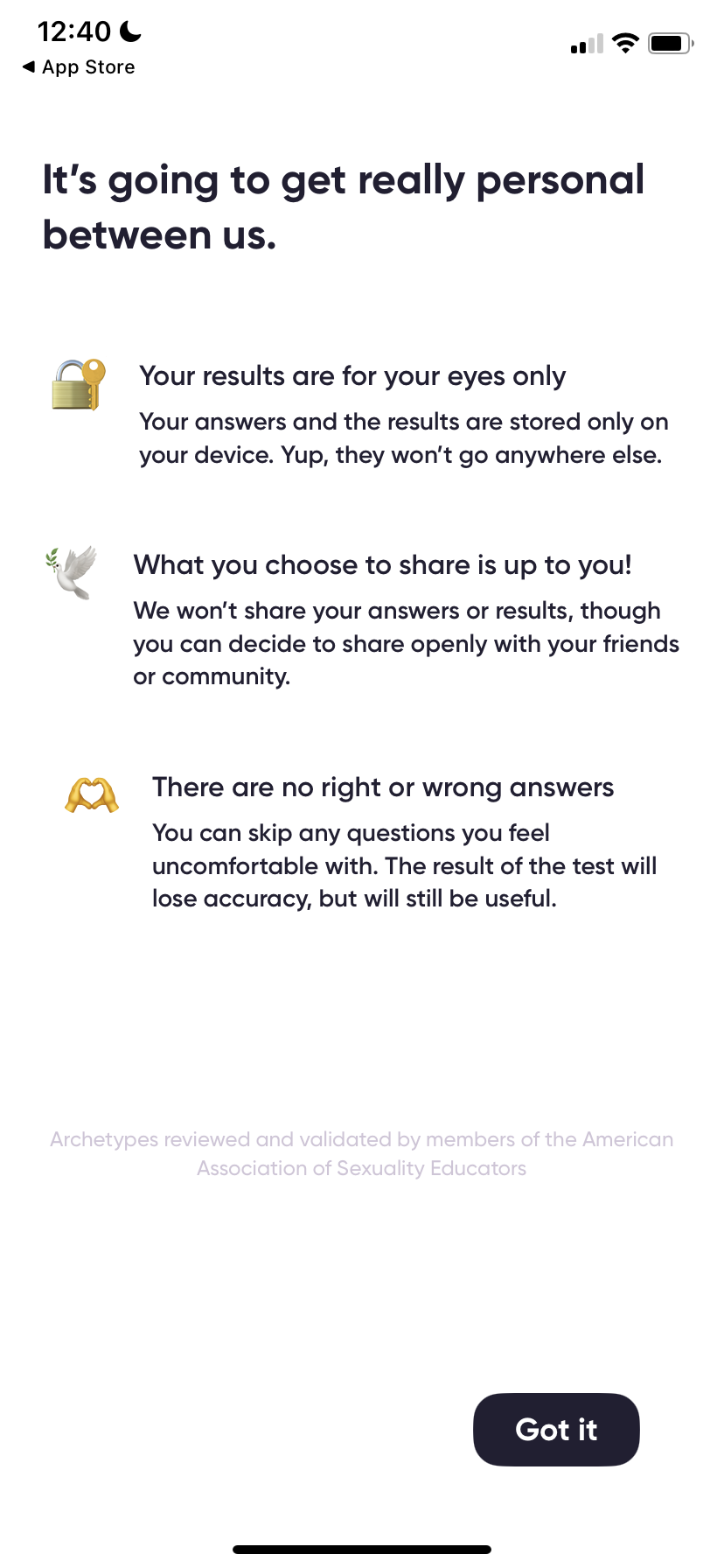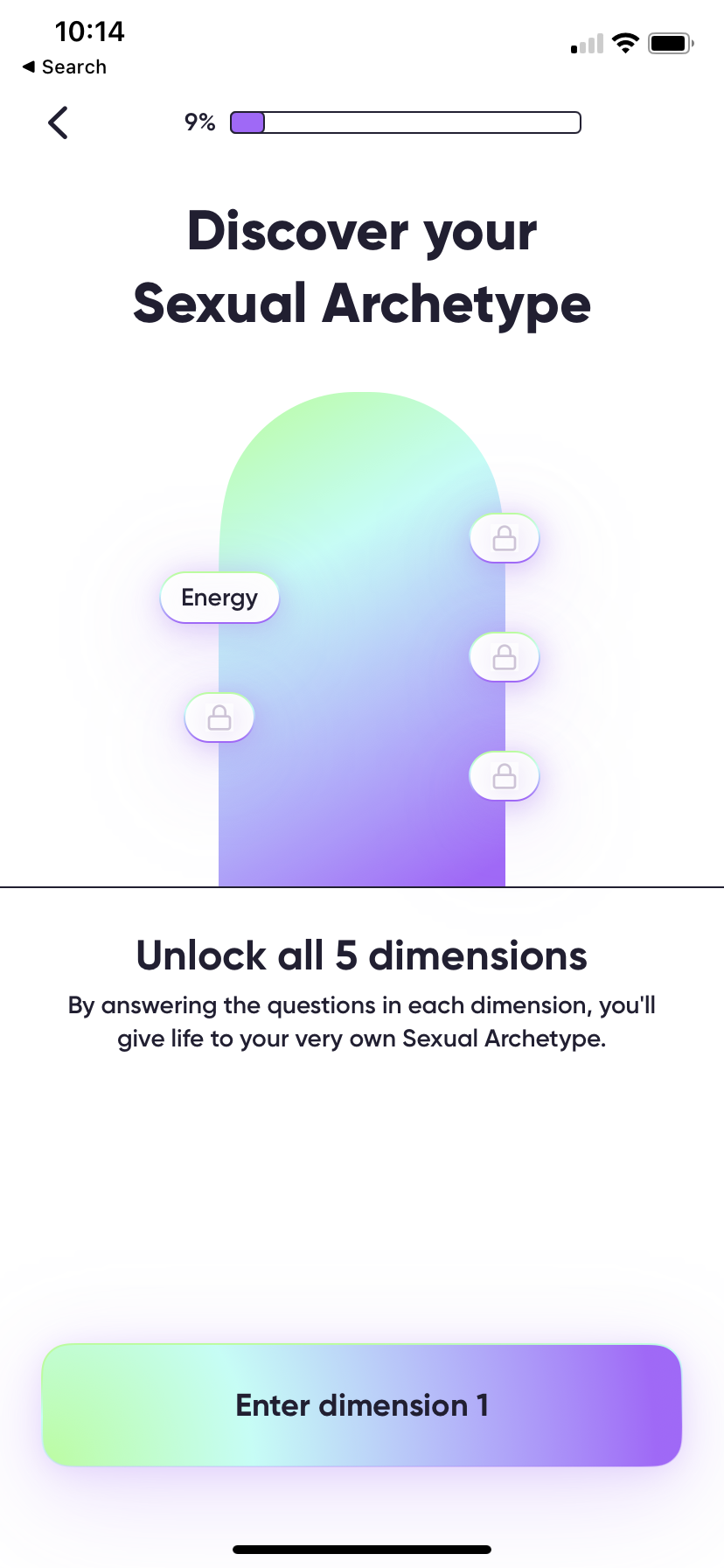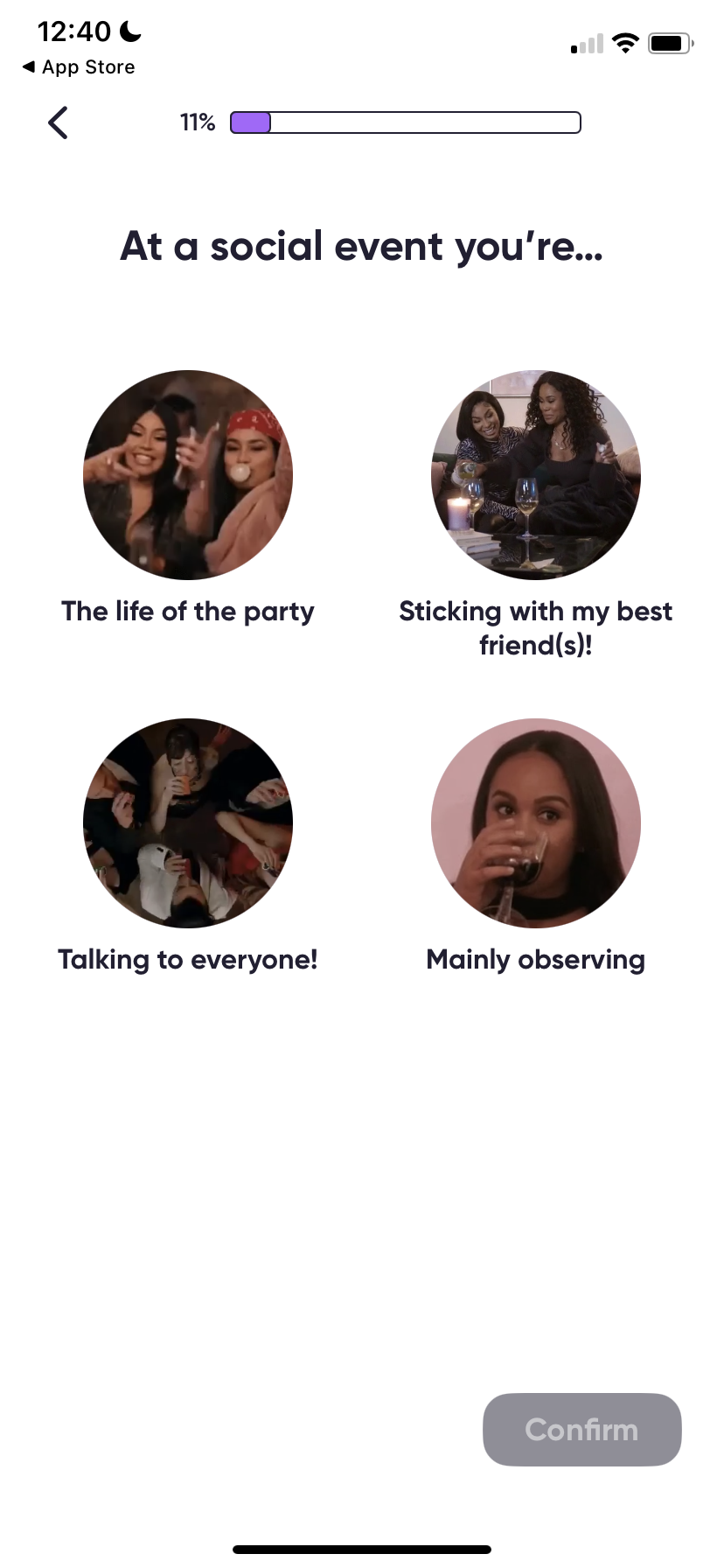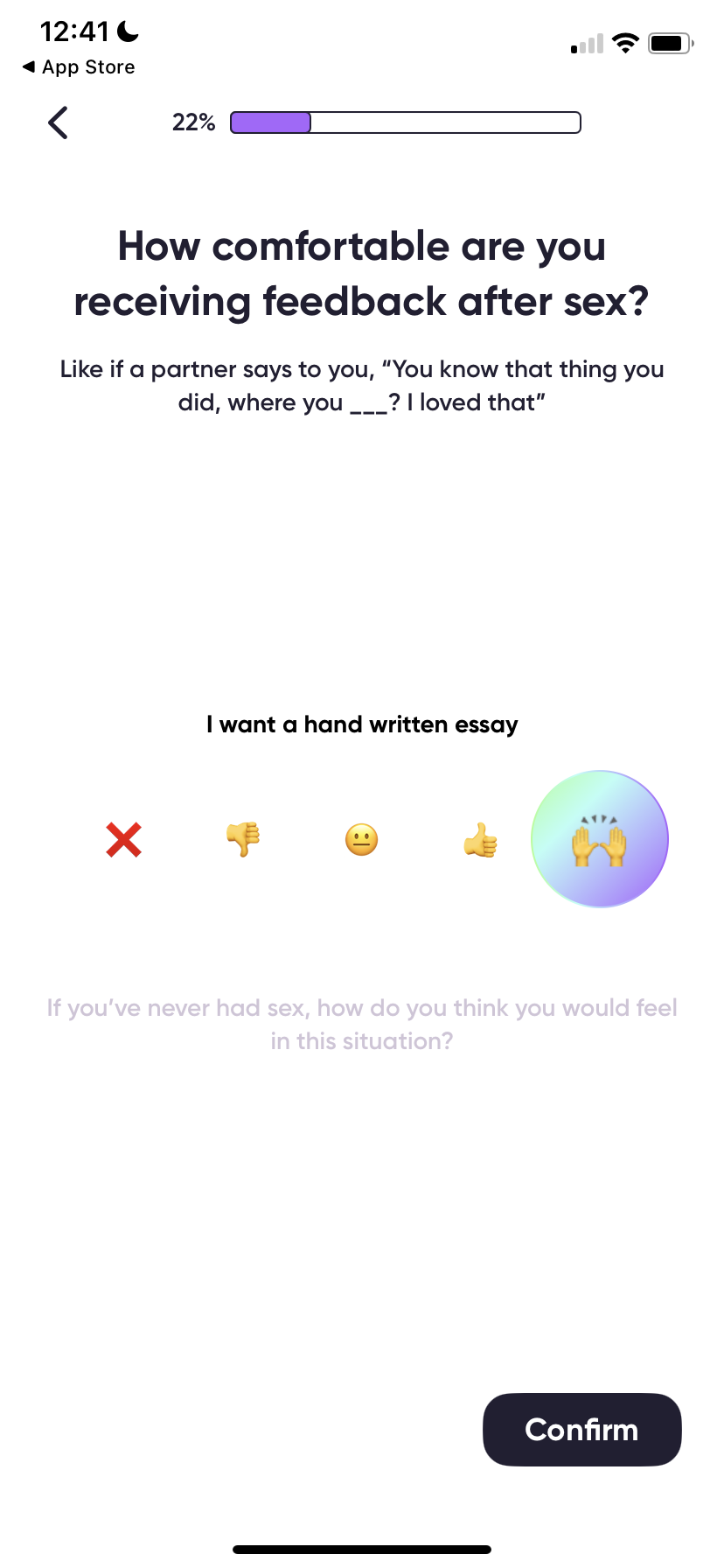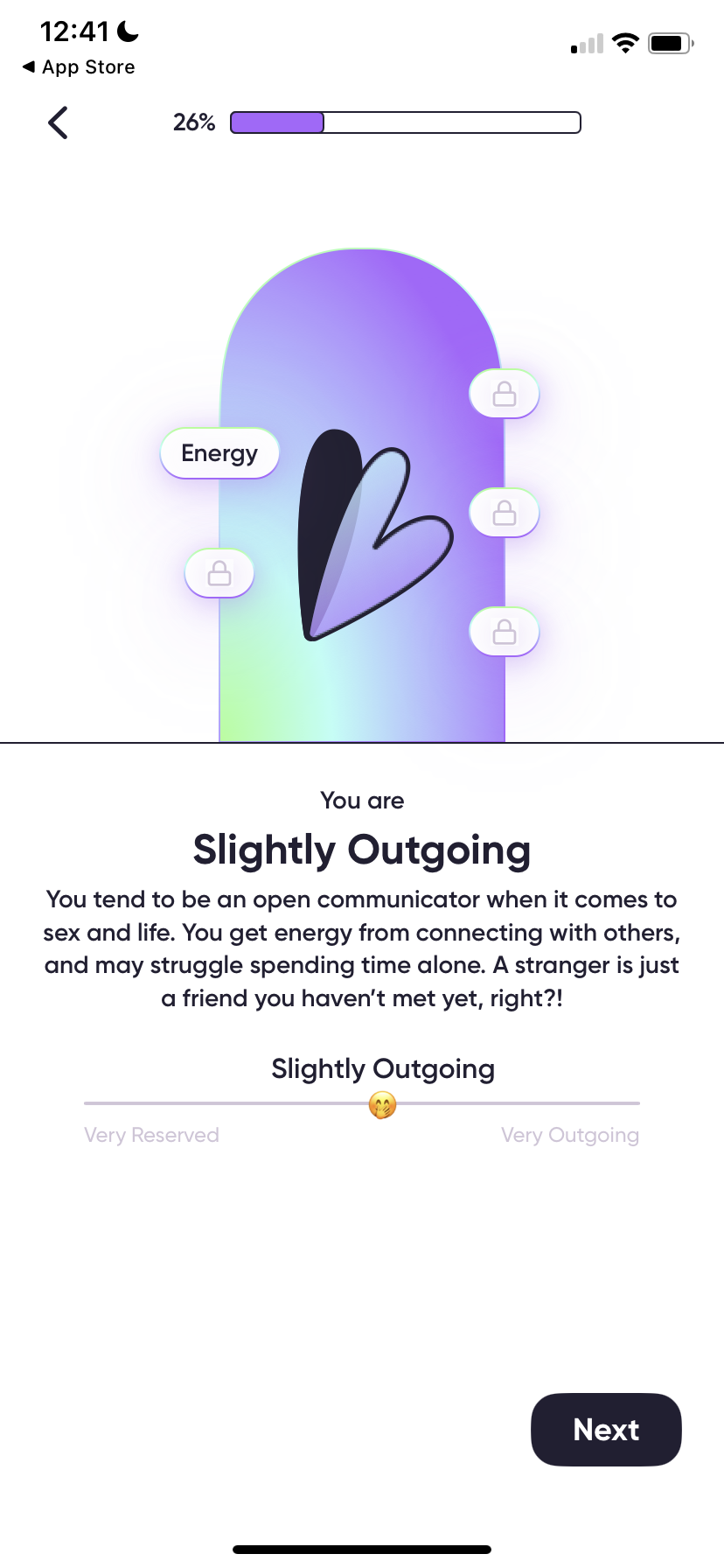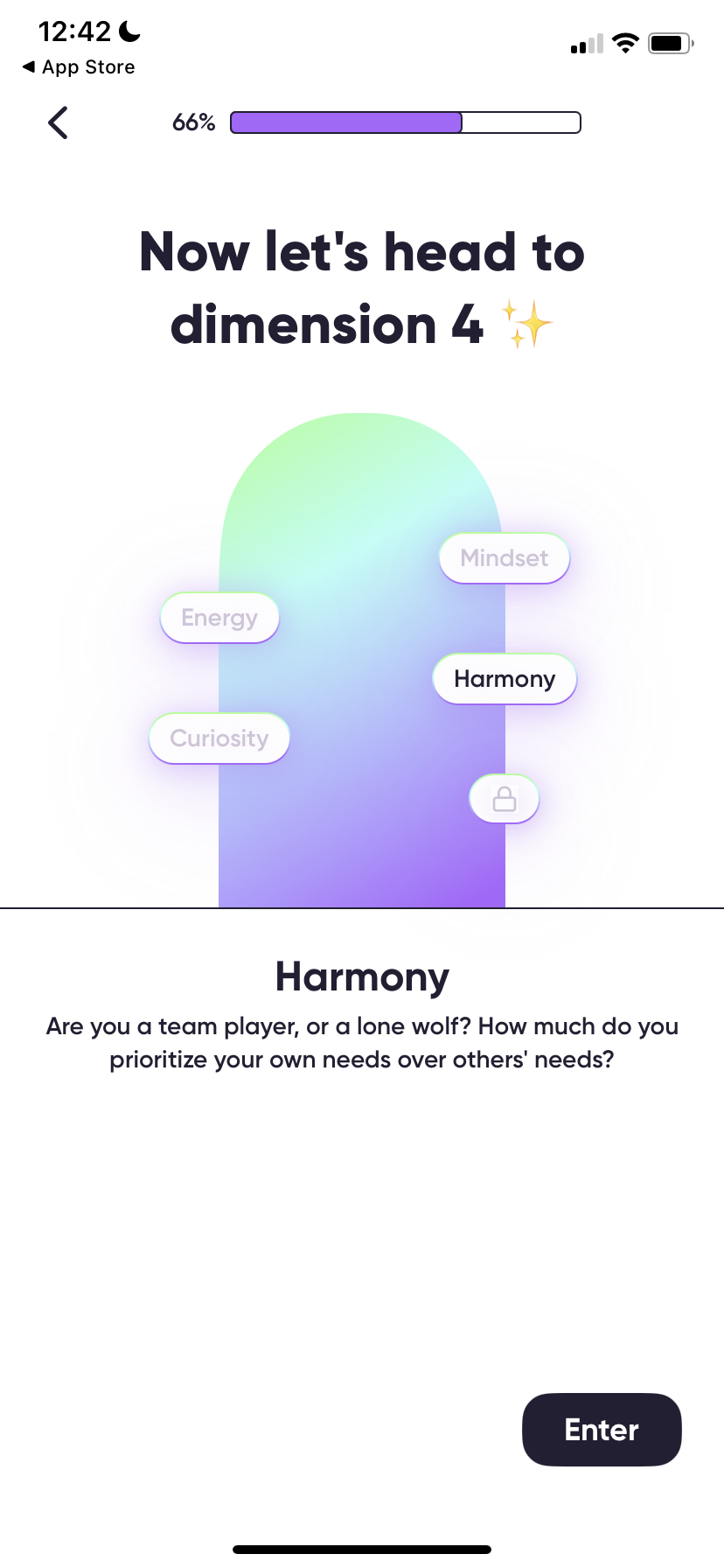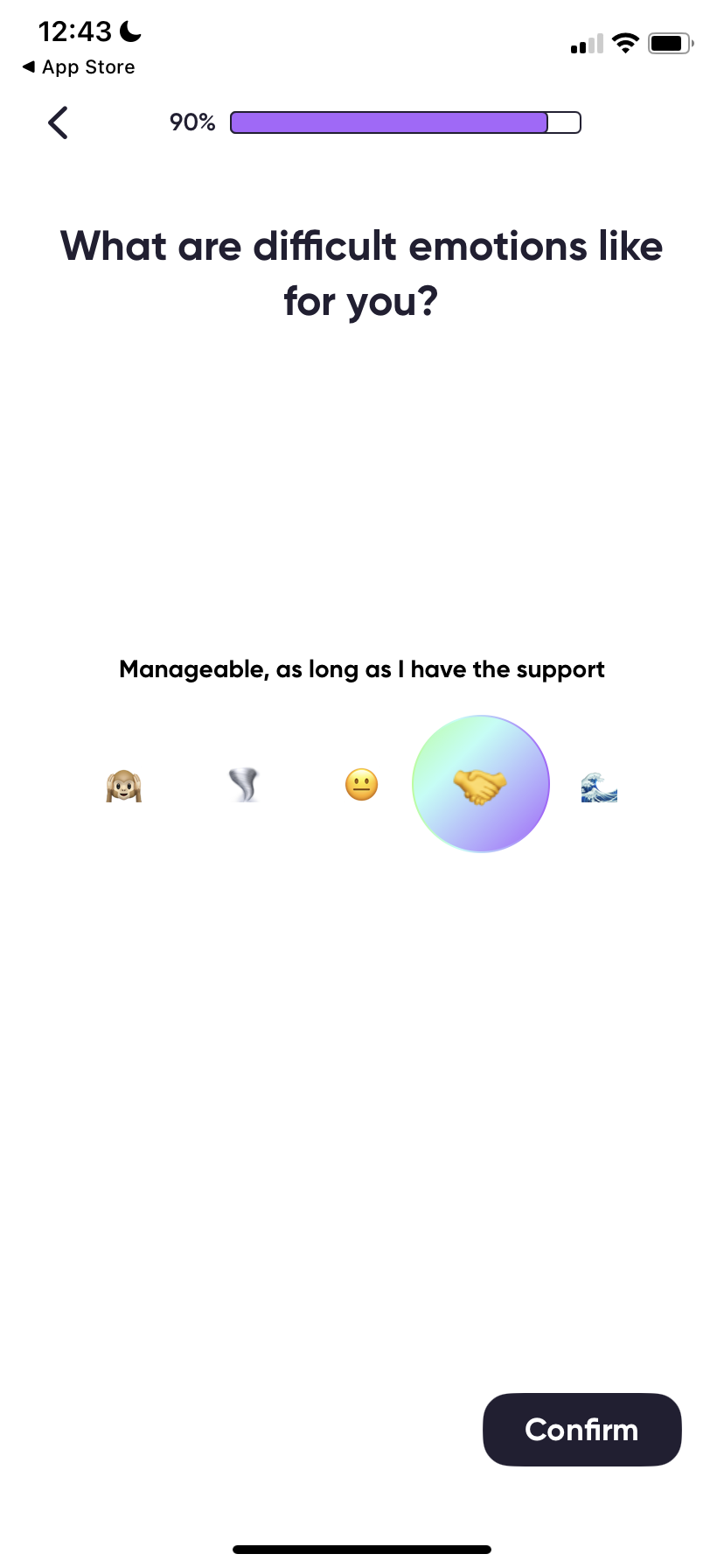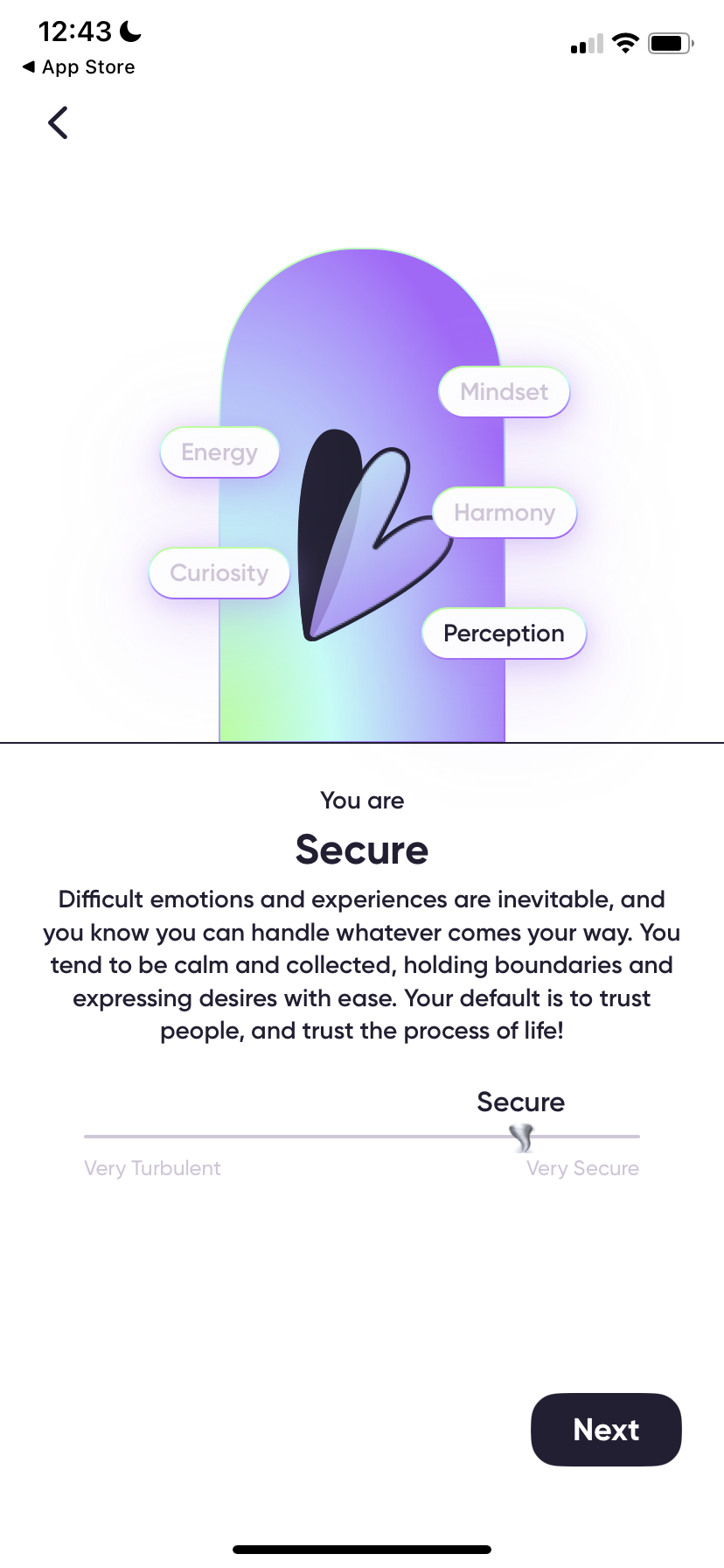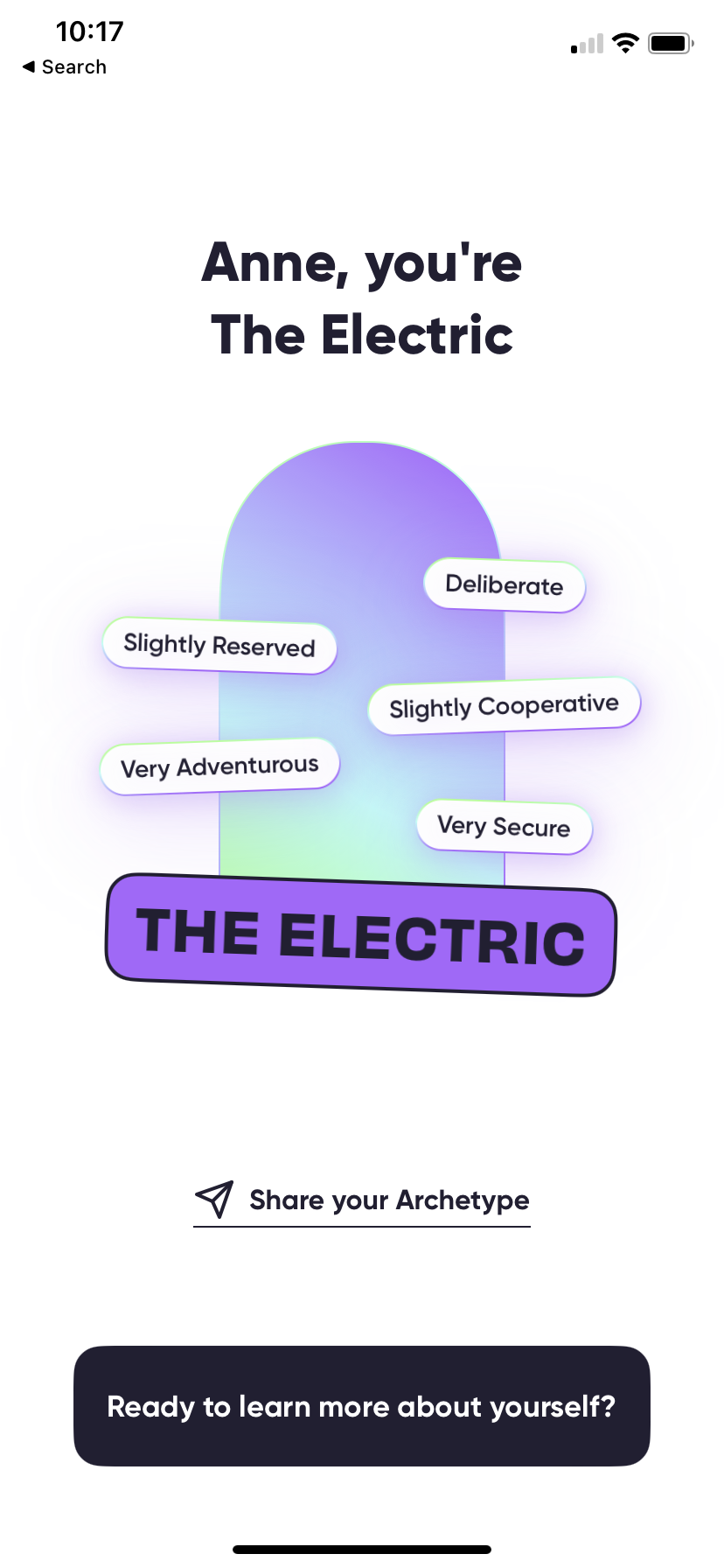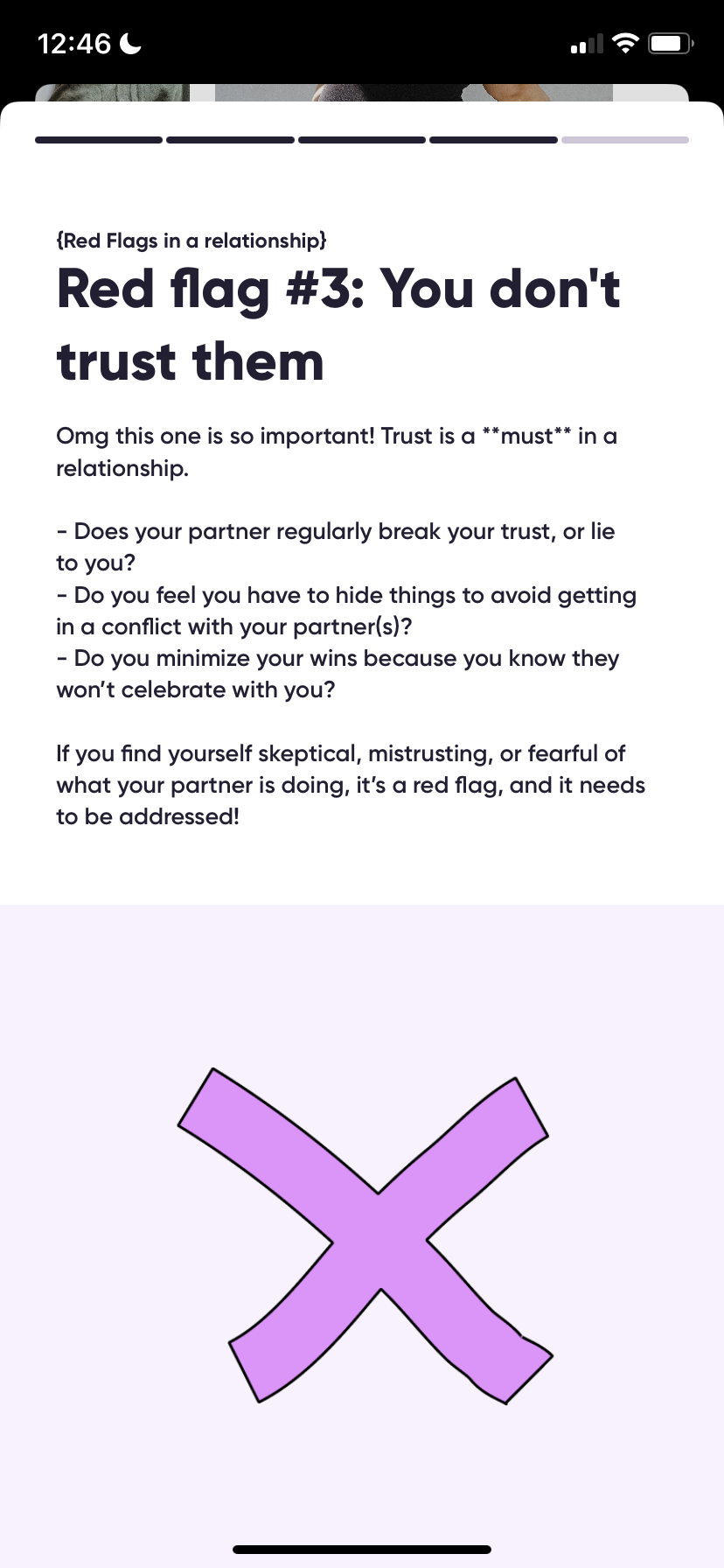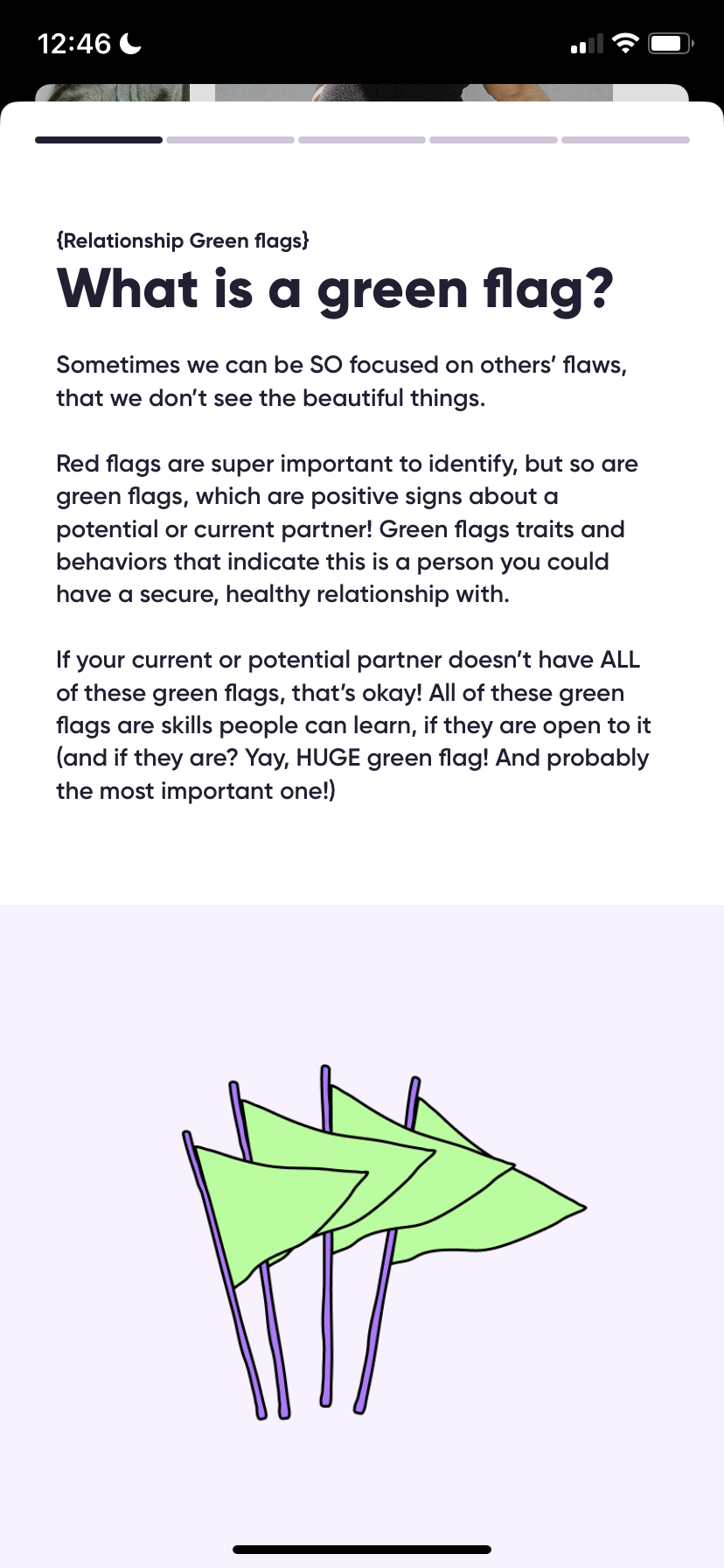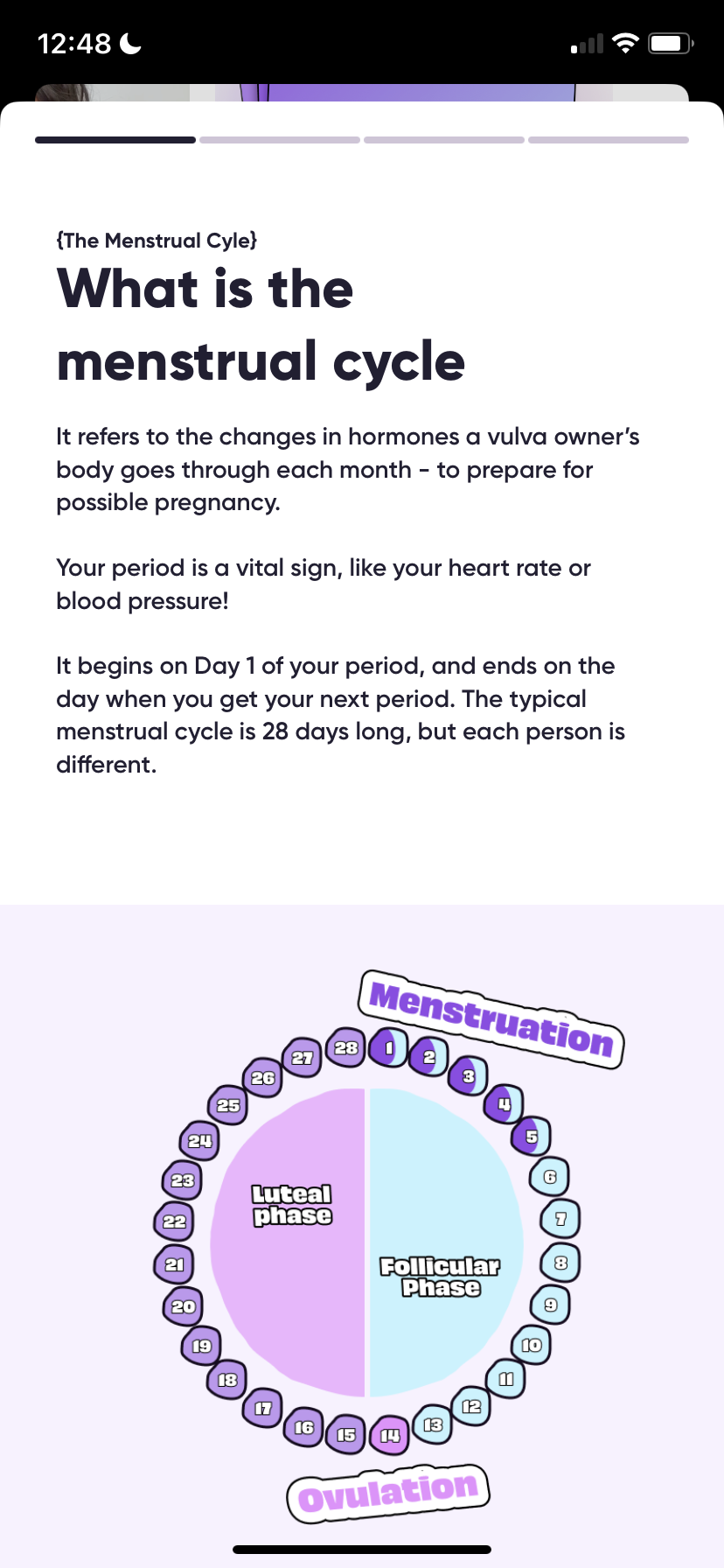sexual wellness for Gen-z
It’s no secret that Gen-Z takes charge of their mental health. But why is sexual health still so “hush hush”?
Our project started with a simple vision: young women embracing their sexual identities and sexual pleasure, and having a strong platform where they can talk about it. With a gap in the market and a small but mighty team, we saw an opportunity to finally change the way young women grow up seeing themselves and their sexuality. Enter: Alis.
I wore many hats on the Alis team 🤠
🇺🇸 Not only was I the only team member belonging to our target market (an American woman straddling between the Gen-Z and Millennial generations), but I also was a Content Writer, UX writer, Copywriter, Consultant, French to English translator, Market Researcher, Scriptwriter, Editor, Creative Producer, and Content Manager.
It’s safe to say that I hardly ever got bored 😉
1. The Sexual Archetype Quiz
We decided early on in our ideation process that we would onboard our users, and capture their attention, through a personality quiz that would give them a taste of our app and help them learn about their sexuality in the process. We started with one of the most widely-known and scientifically-accepted ways to characterize one’s basic personality: The Big Five. With some research on our part and consulting with experts in the field of sex psychology and sexual health, we developed a spin-off of these five classic personality traits and a quiz to go along with it, one that resulted in one of 16 Sexual Archetypes, each with different strengths and challenges. I headed the naming of the dimensions, writing their copy and micro-copy, researching and developing the quiz and its copy, and also working with our subject-matter experts to ensure the validity and reliability of our project.
Results: Over 80% of users who began the onboarding completed it.
2. 🌶️ sexy stories 🌶️
Did I have the coolest job or what?! Below the samples, I’ve detailed the main objectives I had throughout the sexy story project management life cycle, as Project Manager and Creative Producer.
Initiation & Planning Stages:
I conducted an in-person focus group with 8 members of our target audience in Bordeaux, France, to discover the main problems they face regarding sexual wellness, and how the sexy story concept could deliver a possible solution.
Based on information gathered in the focus group, and in our online chatroom consisting of ~100 early users, I defined what the sexy stories would look like, what resources I would need, and delivered the project plan, including its timeline and estimated budget.
After validating the project plan with my team, I reached out to my scriptwriting and voice artist network to announce the casting call, preparing all materials necessary for a smooth audition and onboarding process.
For the initial goal (8 stories to test with our early users), I onboarded two scriptwriters, nine voice artists, and one audio engineer. I briefed them on the project and workflow processes.
Execution:
I wrote the “gold-standard” sexy story as a template for our writers; one down, seven to go! ✅
Their briefing included information on our vision, project goals, and requirements for elements such as tone of voice, story arcs, formatting, and word count.
I edited writers’ drafts.
Once the stories were ready for production, voice actors followed instructions on their briefings for remote recording. I listened to every actor’s recording to ensure quality and ask for any needed re-records.
Final recordings were arranged and mixed by the audio engineer. I listened to each of his versions of the story to determine if any changes need to be made, and to ensure the project was still staying true to the original vision.
After each story had gone through post-production, they were sent off to be put on the early version of the app to be tested.
3. Guided Exercises and Podcasts ✍️ 🎙️
I was tasked with ideating, researching, writing, and recording many guided audio exercises and podcasts for the app. Some exercises and episodes would stand alone, and others would be part of a series. My content writing process for complex projects in my areas of expertise is as follows:
Preparation
Brainstorm: Put on some good music and write down ideas for potential topics of interest for the target audience, without concern for logistics or feasibility.
Selection: Out of the many ideas, take a look with more of a discerning eye. The two winning topics for the first two series were: embracing pleasure and self-confidence.
Program Goals: Write down 3–5 goals for the selected program(s), answering the following question: what exactly will this program do to resolve the listener’s pain points?
Brain dump: Write out all possible sub-topics, practices, and techniques that could be supportive in achieving the Program Goals, and then decide on the most effective and relevant ones.
Execution
Plan: Prepare a writing plan for myself that will allow me to meet any imposed deadlines.
(Research): Depending on my level of expertise on the subject, conduct research to ensure quality and accuracy of sub-topics, practices, and techniques.
Outline: Arrange selected sub-topics, practices, and techniques in an organized outline.
Write & Edit: Stay true to determined tone of voice, word count, formatting, and other elements decided upon previously with the team.
Record: When final drafts are ready, I begin recording the content.
Post-production: If I am in charge of post-production, I leave space in my content production plan to professionally edit my voice-over work myself.
4. Can I get a quickie, plz?
While long-form content is my specialty, I had fun and learned a lot while leading some of our short-form content initiatives. Quickies were designed just as the clever name I came up with suggests: bite-size pieces of educational content that provide quick wins, and which users can easily tackle daily. For this project, I worked closely with content designers to develop a cohesive, and on-brand result that helps gen-z women learn about their sexual anatomy, gender expression, and a variety of other topics and questions many young women told us that they have about sex.
5. Pillow talks
My social media CTA to get new submissions from our community for Pillow Talks
“We move forward when we recognize how resilient and striking the women around us are.”
After launching the first versions of the app, and conducting the first in-person focus group with key members of our target audience, our team realized we needed an app feature or content type that would serve the purpose of bringing women together, and supporting learning from one another. That’s when I came up with the concept of Pillow Talks: short, unscripted stories recorded by our users to be shared (anonymously or not, based on their wishes). The goals of this project were as follows:
Reducing the stigma around talking about sex with peers
Normalizing insecurities, challenging experiences, and common questions or concerns that members of our target audience face
Inspiring others to speak up and share their stories

